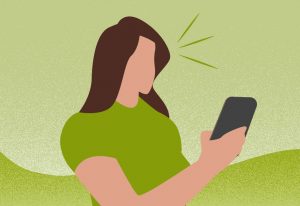In the world of content marketing, good writing is essential. However, stellar proofreading is just as important.
Proofreading corrects all those pesky errors that make the writer and the publisher look bad. For example, a good proofreader knows the difference between “Your fine.” and “You’re Fine.” One is a bad pick-up line, and the other is a message of support.
Proofreading can be tedious work, and many people do it poorly. But, like most things in life, all it takes is a little practice and some expert tips to develop efficient and effective proofreading habits.
What is Proofreading?
An excellent place to start is with a proper definition. So, what is proofreading exactly?
Proofreading is reviewing written material to catch and correct spelling, grammar, and punctuation errors. It sounds simple enough, but proofreading is tricky. Nevertheless, proofreading is critical for effective SEO because if search engines see a lot of poor grammar, they drop the page down in their results no matter how persuasive the copywriting.
Why Proofreading is Such a Challenge
When you proofread, the adage about seeing what you want to see comes into play. Your brain knows what you intended to write or what you expect to see even if someone else wrote it. That makes it easy to overlook common errors and missed words.
If you read a story about how “Mary had a little lamb”, your brain is likely to fix some mistakes as you read, so you don’t see them. Because you know the story, your brain fills in the blanks.
Also, some commonly misspelled words or typos are difficult to spot as you read, such as:
- Is vs. it
- Form vs. from
- There vs. their vs. they’re
Tenses can be challenging, too. For example, did Mary have or had a little lamb? Only a good proofreader knows for sure.
Proofreading Vs. Editing
Since there are professional proofreaders and editors, that would indicate that these are different roles – although they are both about improving the writing content.
Proofreading focuses more on the technical errors of the writing. Let’s go back to the “Mary had a little lamb article”. It would be the proofreader’s job to correct errors in grammar, spelling, and even word choices. For instance, if the writer notes that Mary had a brunch of lambs, the proofreader would decide if she was herding or just a trendy foodie based on professional copywriting.
On the other hand, editing is more substantive. An editor looks to improve the piece’s quality, focusing on flow, style, and expression. Editors ensure word economy and reduce fluff.
Of course, no rule says the editor can’t proofread. It is not uncommon for one person to perform both tasks. An intelligent editor will split the work up, though.
5 Tips for Stellar Proofreading in a Short Time Frame
Proofreading is not one of those tasks you should spend hours doing. For one thing, the more you read something, the less likely you are to find errors. Consider some ways to speed up the process but still do it well.
1. Be the Master of Your Grammar Checker
There are plenty of excellent AI-based grammar checkers out there, and you should use them – with one caveat. Don’t make them the boss. Grammar checkers such as Grammarly are practical tools if you use them correctly. They do lack the human touch, though.
Don’t automate the process. Instead, go step by step through each suggestion from the grammar checker and choose whether it is the right call or not. The accuracy level of a product like Grammarly is pretty good, but it can’t replace the human eye.
Instead, these editors help pinpoint potential issues so you, as the proofreader, can make a call on what is the right option. They are also great tutors. Take the time to learn from them so you get to the point where you don’t rely too heavily on the program. If for some reason the grammar checker doesn’t work one day, you will feel lost if you let them do all the work.
2. Read the Content Then Reread it – Aloud
It is not a good idea to trust your eyes only, either. The more senses you use when proofreading, the better. Okay, you can’t taste, smell or feel something you need to proofread, but you can hear it.
First, read through the article, fix what you can on the first run, and then read aloud. The benefit of reading out loud is your ears may pick up what your eyes miss, such as misplaced or incorrect articles like “a” or “an.”
Although this is a good tip, it’s not a perfect one. It is still possible for your brain to fill in the blanks. There are a couple of ways around that, though. One, you could read backward. This forces you to read each sentence as if it were its own story.
The other option is to read with your eyes while a screen reader reads aloud. This is almost a perfect fix. Screen readers can be frustrating to work with, though, and may slow you down some. But, in the end, if you are struggling to proofread well, it is worth the effort.
3. Double CheckProper Nouns
Proper nouns represent some of the most common mistakes, so they are worth a double or triple check. Don’t forget acronyms, brand names, abbreviations, and trademarks,
One easy way to make this work is to use an online editor to highlight words it doesn’t recognize. You can double-check the spelling when you see a word highlighted or underlined. If it is correct, add it to the editor’s dictionary. With this trick, the editor will only highlight the wrong names so that you can fix them.
4. Slow It Down
It may seem counterintuitive to slow things down to speed them up, but it works better. Scanning is not proofreading, and if you read fast, chances are you are just scanning the material. That means you will undoubtedly miss things.
Instead, make yourself read slower. It may take some practice, but it will become a habit if you work at it. Start by focusing on one word at a time. Once you master that, you can speed up a little, but the goal isn’t to read fast, just to proofread quickly.
5. Make a List and Check It Twice
Take the time to write down issues you see a lot. Then use the checklist to double-check yourself. For example, add a common mistake to your list such as “form” instead of “from.”
After you do your initial proofreading, you can use the word finder to ensure you didn’t miss the standard errors. Bring up the word finder (Ctrl-F on Windows, Cmd-F on iOS) then type in the word “form.” You can scan the words that pop up to ensure they are correct. Over time, you can probably lose the checklist because you will automatically know what to watch for and double-check for it.
6. Commission Professional Proofreading Services at WriterAccess
These tips will make you a better proofreader, whether you check your work or someone else’s as a freelancer. If you still struggle, sign up for WriterAccess proofreader services to save you even more time.
We offer some of the top talents in the country, including writers, proofreaders, editors, and translators, to help you produce successful content. You can get started for free right now with our trial!
2024 State of Marketing Report
Your golden ticket to crush your goals with data-driven insights!
2024 State of Marketing Report
Your golden ticket to crush your goals with data-driven insights!

![[WA] Ebook Brand Writing Styles](https://rockcontent.com/wp-content/uploads/2022/05/Style-Guide-750x200px.jpg)
![[Rock NA] State of Marketing Reports 2024 – Comkt Hubspot State of Marketing Report 2024](https://rockcontent.com/wp-content/uploads/2022/07/Banner-Fino-Rock-Convert-2500-%C3%97-500-px-19.png)






